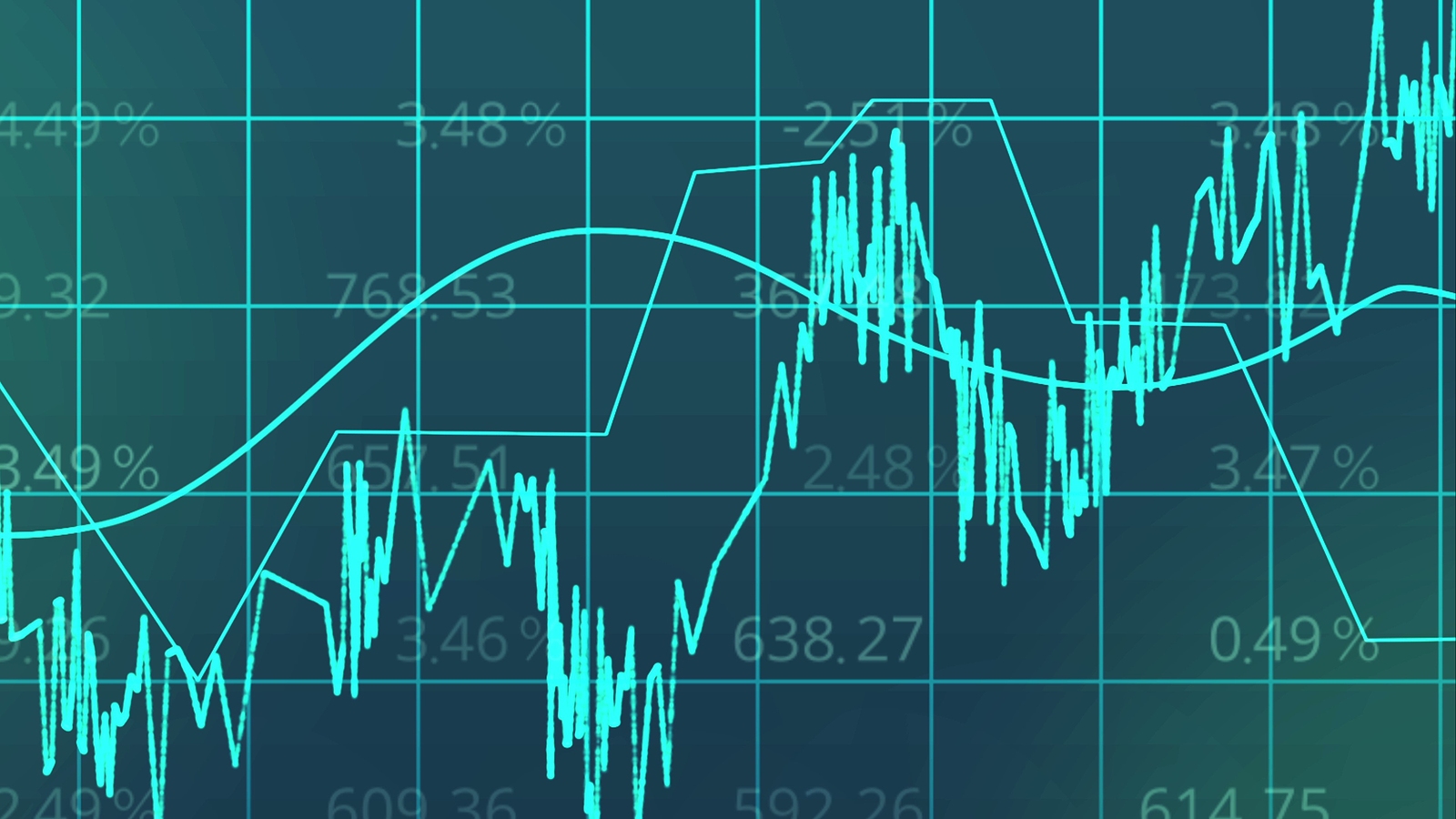eNews March 4
In the News
March 4, 2021
Minor Setback in NACM’s February Credit Managers’ Index Hints Toward Promising Months Ahead
Andrew Michaels, editorial associate
NACM’s February Credit Managers’ Index (CMI) didn’t exactly pick up where the January index left off. However, consistent numbers in both manufacturing and services continue to hint at promising results in the foreseeable future.
“I believe we’re settling into a bit of a pattern, and it wouldn’t surprise me if we saw real growth in April or May,” said NACM Economist Chris Kuehl, Ph.D.
Despite a high last month not seen since March 2006, the combined score for February 2021 fell two points to 57.5, still well above contraction territory and nearly 1.5 points higher than last year. Although both combined favorable and unfavorable factor scores fell, favorable factors accounted for the brunt of the decline.
Kuehl credits the “burst of enthusiasm” seen in last month’s CMI to the start of COVID-19 vaccinations—enthusiasm that waned as distribution complications occurred nationwide.
The February CMI has a combined favorable score of 65.3 compared with January’s 69.7. Dollar collections fell nearly 7 points, from 66 to 59.2. Sales also dropped, going from the mid-70s in January to 69.9 in February. Amount of credit extended and new credit applications saw minimal decreases at 66.8 and 65.5, respectively.
Combined unfavorables declined slightly to 52.2, with individual factors maintaining scores between 51 and 55. Dollar amount beyond terms dipped the most from 58.9 to 52, in addition to decreases in accounts placed for collections (52.9 to 51.6) and rejections of credit applications (51.6 to 51.5). However, disputes (51), dollar amount of customer deductions (52.8) and filings for bankruptcies (54.5) all increased, albeit slightly.
Kuehl said combined favorables were behind the February CMI’s dip because favorables are often the “most sensitive” compared with unfavorables. Favorables reflect immediate business prospects for companies seeking trade credit, while unfavorables, even in the worst of conditions, take two to three months to manifest.
Although the manufacturing sector fell 1.5 points to 58.5, it showed more promise than the service sector, which fell twice as low to 56.4, Kuehl said. Favorable factors in manufacturing scored 67.7 compared with January’s 70.5, mostly in part to the hit to sales. Dollar collections and new credit applications declined from 67.1 to 63.8 and 68.6 to 66.9, respectively, while the amount of credit extended remained relatively unchanged at 69.1.
Manufacturing’s unfavorables experienced minimal change in February after decreasing from 52.9 to 52.4. Four of the six unfavorables showed slight gains, including rejections of credit applications (51.1), disputes (51.8), dollar amount of customer deductions (52) and filings for bankruptcies (54.4). Accounts placed for collection (52) and dollar amount beyond terms (53.3) were the only two unfavorables to decline, the latter experiencing a drop of nearly 6 points.
“Nothing was too surprising because we really saw external forces at play,” Kuehl said. “You saw an awful lot of very temporary industrial production shutdowns, but it still took two to three weeks out of the cycle. I think it was one of those aberration months that I think will correct itself in March.”
February was not a good month for the service sector following its decline from 59.4 to 56.4. Although the sector’s unfavorables saw little change, from a score of 53 to 52. Favorables were hit the hardest, falling 6 points. Dollar collections fell more than 10 points in February, leaving January’s mid-60s score for 54.6. Sales maintained the highest score among favorables at 68.6, despite a 6.5-point fall. Amount of credit extended and new credit applications dipped into the mid-60s with scores of 64.4 and 64.1.
“People are still substituting buying goods for services,” Kuehl said. “Manufacturers are still seeing demand that’s higher than normal from big stuff such as automotive and RVs, which shows in manufacturing. In services, retail has kind of recovered, but the rest hasn’t.”
All of the service sector’s unfavorables held scores in the low to mid-50s—dollar amount beyond customer deductions and filings for bankruptcies being the only two categories to increase from 51.5 to 53.5 and 52.6 to 54.6, respectively. Dollar amount beyond terms saw the biggest drawback from 58.8 to 50.8, while the remaining three unfavorables experienced minimal declines, including disputes (51.3 to 50.2), accounts placed for collections (51.8 to 51.2) and rejections of credit applications (52.2 to 51.8).
“Even with the drop this month, it only went back to the numbers we saw in November and December. It’s not like it was an utter collapse,” Kuehl said. “People are thinking things will be more normal in May or June. That’s the prevailing wisdom.”
Check out the full report for February.
Reasons to Worry or Not Worry About Inflation
Chris Kuehl, Ph.D., NACM economist
Many aspects of inflation can be worrisome. At the same time, some aspects of inflation are more welcome than others. Many people would assert that seeing prices hike is always bad, but they change their tune when that price hike benefits them.
Businesses that can raise their prices and generate more revenue and more profit will happily accept a trend toward inflation. Likewise, there will be some enthusiasm for inflation if it means wage and salary increases are in the offing.
Nations that suffer deflationary cycles are stagnating with companies that can’t generate any additional activity and consumers that are locked into their current patterns of consumption. On the other hand, danger from runaway inflation exists. When the pattern becomes too active, money chases money and prices keep escalating. Banks get wary of lending because they will be paid with money that has lost some of its original value; those that can’t afford the higher prices are in trouble, and those companies that can’t hike their prices just get hammered with higher and higher input costs.
As has been discussed, there are three basic planks as far as inflation threats are concerned. Of the three, one has not been a factor; one has been manifesting already; and one is a potential threat.
Wage inflation is often a main driver of inflation, but it has not been a factor for years. Even when the jobless rate was as low as 3.5%, no discernible wage inflation existed because the U.S. employer could hire people all over the world or deploy automation and robotics. The second plank is commodity costs, which has been a problem of late. The price for lumber has hit all-time highs and has contributed to the rise in the price of new homes. There have been sharp hikes in the price of industrial metals, and we will likely see food prices rise. The only major commodity that has not put much in the way of added pressure is oil. The per barrel price is up a little from the range last year; it has not skyrocketed and has gained by perhaps $10 per barrel on a consistent basis. The future inflation threat is coming from money supply; that is a relatively recent concern. The impetus for this inflation is the nearly $2 trillion stimulus. The argument is that this influx is coming at a bad time: The economy is already growing and doesn’t need this kind of shot in the arm.
When the Fed looks at inflation, it focuses on the core rate. This measure doesn’t look at volatile items such as food and fuel. This is referred to as “real” inflation. It is not considered by the Fed (or other central banks) because of that volatility. The prices for fuel and food change constantly and radically, which makes it hard to compare year to year or even quarter to quarter. It is certainly acknowledged that these prices have a major impact on the consumer, but core rates are the ones used to make determinations regarding interest rates and other Fed policies. The statements from the Fed thus far have been very consistent. They are not looking at rate hikes and won’t unless inflation at the core level gets closer to 3%. For the last 20 years, the core rate has struggled to get to 2%, much less 3%.
Inflation is not a concern with regard to wages—not for a few years. Even if hiring spikes this summer as lockdowns lift, many factors hold down the overall wage rate. Commodity prices will vary. Producers can resume their operations when they finally decide that demand is back and stable. Some of the shortages are temporary in any case. Much of what has driven lumber pricing is that sawmills have been hit by the pandemic and have been running only one shift when they used to run three. Then there is the impact of the Canadian softwood tariffs, which may soon be lifted further. That leaves money supply.
It will all depend on how that stimulus is spent. In a very real sense, the money is as much rescue as stimulus. Those that were slammed by the recession will not be spending on much other than the basics. They will be paying rent and mortgages, and will be trying to catch up from having lost their jobs. The consumer who gets a spike of cash when they don’t really need it right now will be the overheating worry. The specific development that will be watched carefully will be what people spend that money on. Will there be a mad rush back to services after having been denied these opportunities for a year? Will that result in higher prices for these services or will providers be eager to recapture market share. Will a withdrawal of spending on goods result in these becoming cheaper? These will be hard questions to answer until the summer arrives and the lockdowns start to ease.
 |
|
The Incoterms® 2020 rules, published by the International Chamber of Commerce (ICC), explain a set of three-letter trade terms reflecting business to business practices in contracts for the sale of goods. The Incoterms® rules primarily outline the tasks, costs, and risks involved in the delivery of goods from the sellers to the buyers. The ICC periodically updates the rules and the latest iteration went into effect January 1, 2020. After working with the latest terms, you may have come across questions or simply need a refresher. In this webinar, Phillip Poland, head of U.S. Trade Compliance at DHL Global Forwarding will discuss the highlights of the Incoterms® 2020 rules. The focus of this webinar is to raise general awareness and provide valuable resource information. Following the presentation, we will host a Q & A with Phillip for more information. “Incoterms®” is a registered trademark of the ICC. Presenters do not represent the ICC. Topics include:
|
Wells Fargo Economist Projects
Promising Economic Outlook For 2021
Bryan Mason, editorial associate
With the distribution of COVID-19 vaccinations and new relief programs being introduced, the global economy is set for a resurgence in 2021, according to Tim Quinlan, senior economist with Wells Fargo.
In Wells Fargo’s monthly economic outlook for February, Quinlan discussed how two factors—decreases in new COVID cases and increases in fiscal policy spending—will determine how well the U.S. economy rebounds.
According to the CDC, in recent weeks, new positive cases in the U.S. have gone from an average of about 250,000 per day in January to about 60,000 a day. The decrease in fresh COVID cases is promising and will promote economic growth, Quinlan said. However, the “real meat” of this favorable outlook centers around fiscal policy, he stated.
Prior to the $1.9 trillion stimulus bill that was recently passed, Quinlan hypothesized what might happen if a package worth $1 trillion were enacted. Of that amount, Quinlan estimates about half could find its way into household incomes. “If you add $500 billion dollars to households’ pockets, that’s going to find its way into the economy eventually.”
How the money flows back into the economy is uncertain, but Quinlan suggests we can assume based on past experiences and the exponential increase in consumer spending that followed the first stimulus bill last March.
Quinlan, however, expects things to be “a little bit different” this time because of the shift from temporary layoffs to permanent layoffs.
“We still have a lot of worries about how the labor market rebounds,” Quinlan said. “So, I think that might result in something less than all of the additional benefits that are being paid out to households finding its way into the economy.”
Regardless, Quinlan estimates that if half of that money were to find its way back into the economy, that’s “going to result in a pretty substantial increase in spending.” If that happens, coupled with the early promising results from the vaccine, U.S. consumer spending should skyrocket throughout 2021, he added.
Starting with the second quarter, “you’re going to see consecutive quarters of consumer spending in the very high single-digits [and] low double-digits,” Quinlan said. “Anything even close to that would result in one of the biggest surges in consumer spending in American history.”
Inflation, however, could become a concern, considering how stimulus packages and faster consumer growth can typically cause this, he said. The March Commodity Research Bureau (CRB) Index, an indicator for global commodity markets, has reportedly doubled year on year. Despite prices being up currently, Quinlan doesn’t expect them to stay that way.
“You will see bursts of higher inflation in the short run,” Quinlan said. “But also, you have kind of a sustainable upward trajectory with a lot of these prices as well.”
Quinlan doesn’t expect inflation to remain consistent nor does he expect it to cause rate increases or retraction of accommodative programs.
From a global perspective, the combination of vaccines and stimulus packages have been driving major economies. Quinlan stated that among the major economies of the world, the U.K. leads in vaccinations with 19% of adults receiving at least the first shot. The U.S. comes in second at just over 10%.
When looking at fiscal policy spending, the U.S. is at the top of the list with roughly $3 trillion. Which, according to Quinlan, is “about 15% of the size of our economy;” and with another $1.9 trillion on the way, that will push the U.S. further ahead. Other major economies excelling with fiscal policy include the U.K., Canada and Australia.
As a result, Quinlan, believes “2021 is going to be a much better year for the global economy than 2020 was.”
Soaring prices in construction materials are hurting the industry.
“After almost two years of decline, steel prices have risen sharply in recent months,” Credendo analyst, Matthieu Depreter, wrote in a recent report on the sector. “If we look at the steel price index1, we see that the level of January 2021 is 40% higher than that of January 2020.”
Depreter credits restricted population growth and increased Chinese demand as “the main reasons for this movement.”
Iron ore prices support the rise in steel prices, “although it makes a dent in the margins of companies that could not pass on the cost increase to their clients.”
Global steel production fell 1% in 2020 compared to 2019. “This figure hides many disparities among the different regions in the world,” Depreter said.
Depreter expects steel production to rise in 2021, “but not enough to reach the pre-crisis levels (with the exception of China, whose annual production has kept growing for years).
“Global demand … followed an opposite path” due to Chinese demand, Depreter said. “The biggest risk for companies engaged in the steel-making industry is a sudden drop in demand from China, which will possibly happen again, leading to a lower steel price.”
Depreter expects overall steel production “to grow faster than consumption, putting downward pressure on the price of steel” and for iron ore prices “to slightly decrease over time.”
Several factors could impact prices, however:
- China-U.S. relations
- Delays in vaccination campaigns
- Unexpected spread of Covid-19 variants
A recent Construction Dive article reports one contractor had been paying about $750 per short ton for rebar. As of the time of the Feb. 17 article, the cost had spike, to nearly $900, a 20% increase in just more than a month.
The contractor pointed out, "That could mean an extra $200,000 on a concrete job.”
In response to these price hikes, contractors are looking for materials that they can substitute for steel.
“Across commercial construction, steel price increases in recent weeks have caused contractors to rework the material costs on their jobs,” Construction Dive reported. Lumber prices have also been volatile. At the start of the pandemic, lumber costs “leaped up before coming back down last summer” and now they have shot up again.
Construction input prices increased 2.5% in January 2021 compared to the previous month, according to an Associated Builders and Contractors (ABC) analysis of U.S. Bureau of Labor Statistics’ Producer Price Index data released today. Nonresidential construction input prices rose 2.1% for the month.
Construction input prices rose 4.8% from a year ago. Nonresidential construction input prices experienced a 4.2% increase over that span. Softwood lumber prices are up 73% on a year-over-year basis and iron and steel prices are up 15.6%. Natural gas prices have climbed 30% over the past year, while crude petroleum prices have declined 10.5%.
In an ABC press release, the association’s chief economist, Anirban Basu, warns, “The inflation story is real. They say the cure for low prices is low prices. Early in the COVID-19 pandemic, several key commodity prices declined substantially, causing a diminished incentive for suppliers to invest in capacity augmentation. The result is that as demand increases, scarcity builds, and those low prices disappear. Eventually, suppliers respond by investing more aggressively in capacity given the pursuit of higher sales amid higher prices, which eventually results in the pendulum swinging back toward lower prices.
“But this time is a bit different,” Basu said. “Because coronavirus vaccine distribution is accelerating, the expectation is that worldwide demand for steel, aluminum, oil and other productive inputs will surge later this year. The result could be substantial upward pressure on construction input prices.”
Basu believes some of these dynamics became apparent the second half of last year and will likely become even more obvious as the global economy recovers in earnest. ABC’s Construction Confidence Index supports this proposition; more than 55% of contractors expect their sales to increase over the next six months.
He further warns contractors to consider that potential for rapid input price inflation as they enter into new contractual obligations.
“Given the softness in demand in a number of key nonresidential construction segments, the temptation may be to bear the risk of future price increases in exchange for increasing the likelihood of securing new work,” Basu said. “That strategy may work out, but estimators, attorneys, executives and others should be aware that the accompanying risks of such approaches are elevated.”
For material suppliers, large scale construction projects can be problematic from a pricing standpoint” said Chris Ring, of NACM’s Secured Transaction Services. “The material supplier may have bid the project in Nov 2020, and they are awarded the project in March 2021. If the material supplier did not account for price fluctuations in their Nov 2020 bid, they may be held to the lower price when the purchase order is awarded in March 2021. If material suppliers have outstanding bids, they need to review those bids to ensure price increases have been accounted for or renegotiate the bid before it is awarded.
|
Upcoming Webinars |
|
Mar 9 |
A Creative Approach to Accounts Receivable Insurance
Speakers: Ursula Wegrzynowicz and Jennifer Krause, EXIM Bank |
| Critical Elements of the Mississippi Lien and Bond Statutes Speaker: Chris Ring, NACM's Secured Transaction Services |
Mar 10 |
|
Mar 11 |
An Exporter’s Perspective of Incoterms
Speaker: Phillip Poland, DHL Global Forwarding |
| Recent Stimulus Legislation's Changes to the Bankruptcy Code Speakers: Bruce Nathan, Esq. and Eric Chafetz, Esq., Lowenstein & Sandler |
Mar 15 |






